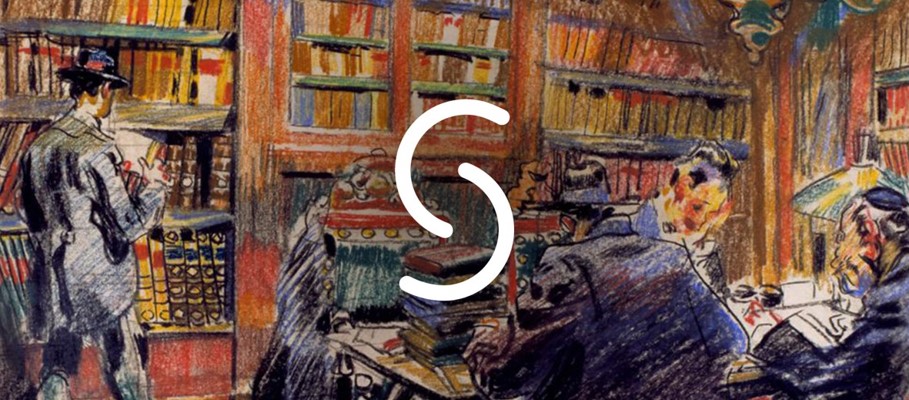אוסף כתבי היד של יד בן־צבי (Yad Ben-Zvi Collection of Manuscripts)
Item
-
Nota de estado
-
Finalizado
-
Country
-
IL
-
Name of institution (English)
-
Yad Yitzhak Ben-Zvi Institute
-
Language of name of institution
-
heb
-
Contact information: postal address
-
14 Ibn Gvirol, Rehavia, Jerusalem, 9107601
-
Contact information: phone number
-
00972 02-5398888
-
Contact information: email
-
ybz@ybz.org.il
-
Title (English)
-
Yad Ben-Zvi Collection of Manuscripts
-
Title (official language of the state)
-
אוסף כתבי היד של יד בן־צבי (Yad Ben-Zvi Collection of Manuscripts)
-
Language of title
-
heb
-
Creator / accumulator
-
Yad Ben-Zvi Institute
-
Date note
-
14th century/21th century
-
Language(s)
-
heb
-
lad
-
por
-
spa
-
others
-
Extent
-
c. 4,000 storage units
-
Type of material
-
Textual Material
-
Scope and content
-
The Yad Ben-Zvi Collection holds over 3,600 manuscripts and more than 470 inscriptions from all over the Jewish World. Aside from Hebrew, it contains manuscripts in several languages, such as Jewish-Arabic, Jewish-Persian, Ladino, and Yiddish. Its holdings cover a wide range of primarily religious subjects, including, for instance, works on the Talmud, midrash, kaballah, responsa, and many more.
The collection includes a 15th-century Sidur (Ms. 2048) donated by the Jewish community of Aleppo in 1957. This prayer book was written in Sephardi semi-cursive and illuminated in Lisbon, presumably between 1484 and 1496, and is part of a group of several manuscripts associated with a workshop operating in the Portuguese capital city at the end of the 15th century until the date of the Expulsion (Avrin, 1998).
The manuscript Pingas Pisa (Ms. 4009) contains loose pages, written in Portuguese, of the first record book of the Jewish community of Pisa (Libro Vecchio della Nazione Ebrea di Pisa). The record book was already in use in 1591 and continued receiving entries until the end of the 1730s.
There is also a parchment folder containing two ascamot books of the Jewish nation of Livorno. The first 45 ascamot of the first book are written in Portuguese and derive from reviews between 1597 and 1655. The following 51 ascamot were written in Portuguese and Spanish between 1655 and 1677. The second book includes the text of the public statement compiled by the nation's rabbis and government against the accusation from Rabbi Jacob Sasportas. Toaff (1990) published the transcription of some excerpts of the statement.
-
Archival history
-
In 2014, the Yad Yitzhak Ben-Zvi, in cooperation with the National Library of Israel, initiated a project of digitization of its manuscripts. The process of photographing/scanning and cataloguing its holdings was completed in 2017.
-
(source: Yad Yitzhak Ben-Zvi)
-
Administrative / Biographical history
-
Yad Yitzhak Ben-Zvi bears the name of the second president of the State of Israel. It is a research, cultural, and educational institution operating according to a particular law of the Knesset from 1969. The main functions of the institution are the production and dissemination of research on Israeli communities in the East and on the Land of Israel, focusing also on the study of Jerusalem.
The Yad Yitzhak Ben-Zvi complex comprises a national heritage site, research institutes, a library, a photo archive, a book publishing house, and the School of Jerusalem Studies. It is also home to the President's Barracks, and from 1953 to 1971, the complex served as the President's residence.
The Yad Ben-Zvi Library is open to the general public. It preserves community and religious books of diverse communities and rare books, periodicals, documents, and maps. The photo archive, named after Shoshana and Asher Halevi, contains hundreds of thousands of photos that reflect the history of the Jewish people in its Diaspora and the history of the Land of Israel and its inhabitants in the last one hundred and fifty years.
In recent years, Yad Yitzhak Ben-Zvi has been leading heritage projects under the leadership of the Department of Treasures and Visual Documentation, documenting heritage assets in several museums across the country and making their treasures available to the general public.
-
(source: Yad Yitzhak Ben-Zvi)
-
Author of the description
-
Joana Rodrigues, 2023
-
Bibliography
-
Avrin, L. (1998). The Ben-Zvi Institute Siddur. Studies in Bibliography and Booklore, 20, 25–42. https://www.jstor.org/stable/27943550
-
Afonso, Luís Urbano. “A Escola de Lisboa de Iluminura Hebraica.” Invenire. Fiat Lux. Estudos Sobre Manuscritos Iluminados Em Portugal 1 (2015): 74–81.
-
Moita, Tiago. “O Livro Hebraico Português Na Idade Média: Do Sefer He-Aruk de Seia (1284-85) Aos Manuscritos Tardo-Medievais Da ‘Escola de Lisboa’ e Aos Primeiros Incunábulos.” PhD thesis, Faculdade de Letras da Universidade de Lisboa, 2017.
-
Toaff, Renzo. “Il governo della Nazione Ebrea a Pisa e Livorno dalle origini (1591) al Settecento.” La Rassegna Mensile di Israel 50, no. 9–12 (1984): 503–41. https://www.jstor.org/stable/pdf/41285392.pdf?refreqid=excelsior%3A765a48b360f18f637dc90271c52904d3.
-
Toaff, Renzo. La nazione ebrea a Livorno e a Pisa (1591-1700). Florence: L.S. Olschki, 1990.
-
Toaff, Renzo. “La giurisdizione autonoma degli Ebrei in Toscana in base ai privilegi del 1593.” Rassegna mensile di Israel 34, no. 1 (1968): 15–27.
Linked resources
Items with "Existence and location of originals: אוסף כתבי היד של יד בן־צבי (Yad Ben-Zvi Collection of Manuscripts)"
| Title |
Class |
| כתיב (Ktiv) |
|
Items with "Collections (official language of the state): אוסף כתבי היד של יד בן־צבי (Yad Ben-Zvi Collection of Manuscripts)"
| Title |
Class |
| יד יצחק בן־צבי |
|
